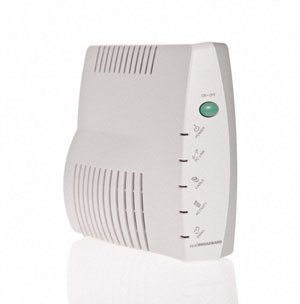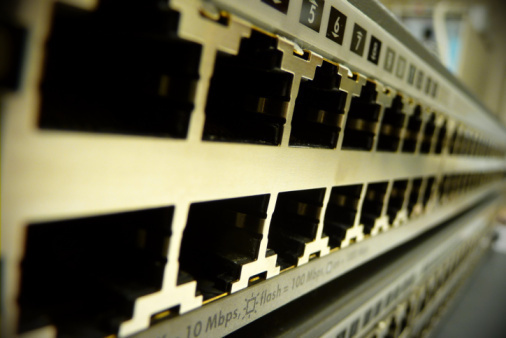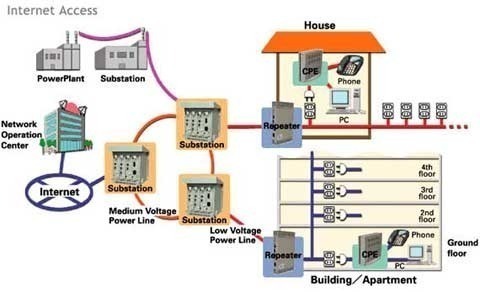Description of ADSL
A special Internet service which is available in many areas is called the Asymmetrical Digital Subscriber Line (ADSL). ADSL connections use existing copper telephone lines to transmit data to and from the ISP. These connections may be limited by proximity to the ISP or the telephone company because the data will lose strength through the phone lines the further away it is to where it needs to travel. Usually, these services require a special type of ADSL modem to access the Internet at high speeds usually within 1.5Mbps and 9.0Mbps. This option is fairly fast for most people who use the internet.
The Different Types of ADSL Modems
ADSL modems come in different varieties which are all beneficial in their own ways. Connectivity through the ADSL modems requires a special filter to be placed between the phone line and the modem to allow for regular calls to be able to go through without having to kick the Internet connection offline. There are options for ADSL modems which can connect through USB interface to the computer while others use the standard Ethernet port. Some ADSL modems are able to split a connection with multiple Ethernet connections or through wireless access as well. The process of using these modems could differ, but they generally work the same.
Training the Modem
Most ADSL modems need to “train” which is simply establishing a connection with the ISP through the phone line before being able to connect the Internet with your computer. This process could take a few seconds to several minutes due to different reasons. Once trained, the ADSL modem can provide fast Internet access with high download speeds. Upload speeds will usually vary from 16Kbps to 256Kbps with most services and can vary when multiple people are online through the same service over the same phone lines. The following are problems which commonly cause slow training of modems:
Old Telephone Lines – Older telephone lines are one of the main problems with ADSL connectivity during training. Older lines may also cause the connection to cut off because the signal is lost because there is too much traffic on the line. If you use the phone line to talk and here interference or other voices than that of yourself and the other party which you are speaking to, it may be due to older damaged lines.
Problems with Telephone Lines – When the phone lines have damage in them or the protective casing has deteriorated the quality of calls as well as data transmission can reduce. You can tell when it is phone line problems when it is particularly hot outside or very humid as the heat makes connections worse and moisture gets into the line. This can even knock out phone lines in some areas where the phone lines take more damage.
Too Many Connections – When there is an excess of telephone call traffic on the same phone lines that you use the connectivity for ADSL services can suffer. This can also be due to several other people who use ADSL services to connect in the same local area which can easily cause negative interference.
Proximity to ISP or Phone Company – If the person who is connecting to the ADSL service with their modem is too far away from either company, the connection may take longer to train as well as have higher latency during the connection. Latency is simply the reaction time between the modem and the service provider which could be longer with further locations. This can definitely cause issues for some ADSL subscribers.
A Faulty ADSL Modem – Some modems may get damaged over time or simply are deployed damaged and have a difficult time training if it even can connect to the service. One of the most common ways that the ADSL modem can be damaged is during a lightning storm. Electrical surges can burn out modem components and cause it to function improperly.
Cheap Services – Some ADSL services are simply cheap and you get what you pay for with these services. This may mean down time during certain periods and slower browsing speeds because larger amounts of people make their way online.
Troubleshooting an ADSL Modem
When an ADSL modem will not connect, it is important to run through diagnostics to ensure what the problem is. The first thing that must be done is to check to see that the ADSL lights are on. This will indicate whether or not it is receiving power and will provide information about the connection. If lights are blinking slowly, it most likely means that the modem is trying to connect with the ISP. If no lights are on, or lights are a red or orange color when they are normally green, this indicates a problem.
When there are no light indicators displayed, this can mean that the power to the ADSL modem has been cut off. Make sure that it is properly plugged in and receiving power. If the power cable is in place, but the power light is off, then the modem may be faulty. One more thing to check will be the fuse box for a tripped fuse at the location where the power cable is connected. Reconnecting the fuse may fix the problem. If it does not fix the light indicator problem, then the modem must be replaced or tested by the phone company or ISP to ensure it is working.
When training does not work and there are indicators that there is a connection problem, make sure that the telephone cable is properly inserted into the ADSL modem. Check along the length of the cable for a break or cut in the wire. If there is no wire and the connection looks fine all the way to the filter box, then it is not the phone cable. Check the filter and test the phone to see if it works. If the phone works fine, then there may be a problem with the filter. Take the filter off and connect the ADSL directly into the phone jack and see if it trains or simply stays in a disconnected state. If it connects this way then it may be a faulty filter, if not then your phone service is probably down or under maintenance.
Going for more than 24 hours without a live connection to the Internet indicates a serious problem. It is important to call your ISP for assistance with your ADSL modem. Sometimes settings can be changed on the computer which simply makes the ADSL modem inaccessible and tech support can help you to recover the proper settings as well as perform additional diagnostics for your ADSL modem. If this does not fix your Internet connectivity issues with ADSL services, switching to an alternative service may be required.




jesus
thanks for explanin.actually i would buy an adsl cause of it’s high internet connection(256),but how can i have no trafic,how can i usa the service what i’m gonna choose in the best speed?should i do something?